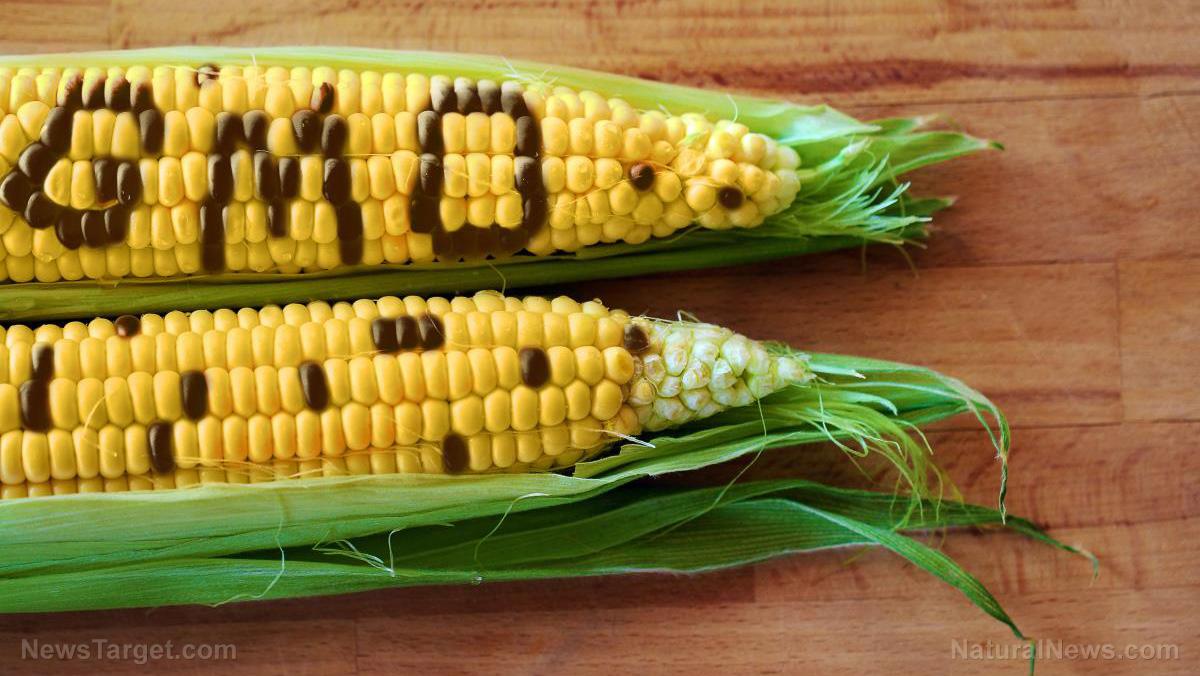Without much more than a whisper from the mainstream media, Monsanto’s newest Frankenfood has received full EPA approval and will be arriving on dinner plates by the end of the decade. The implications of this are harrowing, to say the least.
Article by Sayer Ji republished from GreenMedInfo.com
While you may not have made up your mind on the dangers of GMOs, you likely feel entitled to know when you’re consuming a food that is the product of laboratory research. For this reason, I am reporting on Monsanto’s latest food technology, unfortunately, already in the pipeline. And quite silently so. I write this with a certain degree of solemnity, if not also a tinge of regret, because, for three years, I have heard rumblings of Monsanto’s next project – RNA interference technology. It was actually the late Heidi Stevenson, my friend, colleague, and founder of the platform Gaia Health, who first alerted me to the dangers of RNA interference-based tinkering with our food supply when she reported on the near disastrous approval of GMO wheat using RNA interference technology in Australia. Thankfully a few brave scientists and informed public stood up and, together, averted the disaster. But since then, both the dangers and the breakneck speed of development of this technology have gone largely ignored, even among activists deep in the non-GMO movement. In order to truly appreciate the gravity of the situation, and why the EPA’s approval of RNAi corn intended for human consumption, is so concerning, it will first require a little background information on the fascinating topic of non-coding small RNAs, and their formidable relevance to our health.
How Non-Coding, Small RNAs Link Together The Entire Biosphere
One of the most important discoveries of our time is that all plants, including those we use for food and animal feed, contain a wide range of RNA molecules capable of inhibiting gene expression or translation. These non-coding RNA molecules neutralize targeted messenger RNA molecules (mRNAs), which prevents their translation into a protein, i.e. they “silence genes.”
Compelling research has surfaced suggesting that not only do these genome-regulating small RNA molecules exist in our foods, but that they are capable of surviving and being absorbed into our bodies fully intact where they alter, suppress or silence genes, post-transcriptionally. Moreover, some of these small RNAs — primarily microRNAs (miRNAs) and small interfering RNAs (siRNAs) — are believed to be cross-kingdom mediators of genetic information, making it possible for RNAs in one species impacting many others through both their active and passive exposure to them.
Food therefore is essentially an epigenetic modifier of gene expression, making it a form of information, and not only a source of bodily building blocks and caloric energy, as conventionally understood. As such, any significant changes to food or feed staples within our food chain could have powerful impacts on the physiological fate of those consuming them, essentially rewriting they functionali tof our genomic hardware via software like changes in RNA profiles. The entire biosphere, therefore, is held together in a web-like fashion through these molecular RNA messengers, lending a plausible mechanism to the biotic aspect of Lovelock and Margulis’ Gaia theory of Earth as a self-regulating, meta-organism. You can learn more by reading my article Genetic Dark Matter, Return of the Goddess, and the Post-Science Era.
Monsanto and Co Capitalizing on RNA interference Technology
While this discovery will have profound implications for the field of nutrition and medicine, it has also created enormous interest among biotech and agricultural firms, namely, Monsanto and Dow, looking to capitalize on the design of proprietary products using interference (RNAi) technology. In mid June, last discovery Monsanto received EPA approval for a type of corn genetically altered to produce an RNA-based pesticidal agent (aka, a plant-incorporated protectant (PIP)) which lethally targets a metabolic pathway within the corn rootworm, known within the industry as the “billion dollar bug.” Branded as Smartstax PRO, the newly minted GMO plant produces a small, double-stranded RNA known as DvSnf7 dsRNA which disrupts a critical gene within the rootworm, causing its death. This was added on top of four other “stacked” GMO traits, such as the ability to produce two other pesticidal proteins (Cry1A.105 and Cry2Ab2), as well as survive exposure to both glyphosate (aka Monsanto’s Roundup 2) and Glufosinate (aka Dow’s Libertylink), highly toxic herbicides. Roundup, for instance, has demonstrated carcinogenicity in the parts per trillion range. Yet, the EPA considers it perfectly safe for consumers to ingest many orders of magnitude higher concentrations than that, proving its function as a cheerleader and not a regulator of the industry that controls our food supply.
The Atlantic, one of the only mainstream news outlets to report on the topic, pointed out how surprisingly low key the approval process was:
“The EPA’s decision attracted little attention from the press or even from environmental groups that reliably come out against new genetically modified crops.”
Bill Freese, The Center for Food Safety’s science policy analyst, told the Atlantic he was caught off guard by EPA’s decision to only allow 15 days of public comment, and the fact that it did not post its decision to the Federal Register, as it customary, especially considering how unprecedented the use of a RNAi insecticide in a plant intended for human consumption is. Monsanto anticipates the new corn will be on the market by the end of the decade
How many pounds have you lost this month? At Dieta Efectiva you can lose 10-12 lbs your first week and 2 – 5 lbs every week after. Visit us dietaefectiva.net to learn more about our program.
NN:BG







